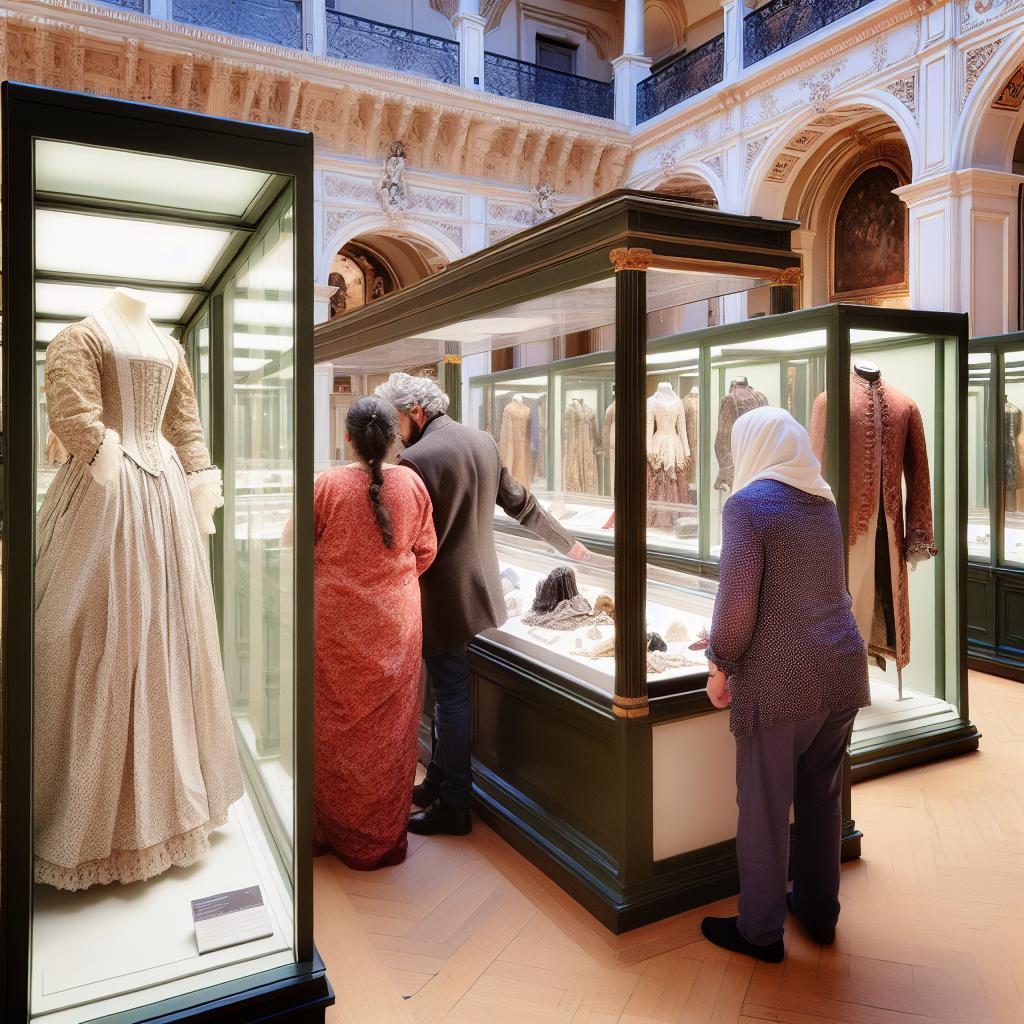The Role of Museums in Preserving European Fashion History
The preservation and presentation of European fashion history by museums significantly contribute to our understanding of cultural and artistic shifts over centuries. Through their efforts, museums offer an insightful window into the past by curating vast collections with meticulous care, employing strategies that ensure the sustainability and preservation of these often delicate textiles.
Conservation Techniques
To guarantee the preservation of historical garments, museums leverage state-of-the-art conservation techniques. One key approach involves maintaining a climate-controlled environment, meticulously regulating both temperature and humidity to shield fabrics from potential degradation. In addition to climate control, specialized lighting systems are employed. These lighting systems are designed to minimize photodegradation, thus preventing the fading and weakening of textiles over time.
Garment Stabilization
An important aspect of conservation is garment stabilization. This process involves using reversible stitching methods to reinforce seams, ensuring any restoration work can be undone without causing damage. Modern materials are sometimes used to support fragile areas, designed to mimic the appearance of the originals as closely as possible. This approach maintains the authenticity of garments while providing the necessary structural support needed during exhibitions.
Research and Documentation
Museums engage in extensive research to accurately document the history and context of each item in their collections. This research includes an analysis of fashion trends, production methods, and the provenance of each piece. Collaboration with fashion historians and academic institutions frequently occurs, further enriching the museum’s knowledge base and enhancing the interpretation of each garment. Such partnerships ensure a comprehensive understanding of the social, cultural, and historical narratives embedded in fashion.
Archival Records
The maintenance of detailed archival records is pivotal in preserving the historical significance of garments. These records typically include a range of materials such as photographs, historical documentation, and expert analyses. With the advent of digital technology, many museums extend their archival efforts by creating digital repositories. These digitized records make the information available to a broader audience, thus expanding the reach and impact of their collections.
Exhibition Design
The presentation of European fashion history through thoughtful exhibition design is essential for conveying the garments’ aesthetic appeal and cultural narratives. Exhibitions are frequently organized around themes, whether they focus on specific designers, historical periods, or cultural movements. This thematic approach allows museums to place garments within their original social and artistic contexts, enhancing visitors’ understanding and appreciation.
Innovative Display Methods
Museums are increasingly incorporating innovative display methods to create engaging and immersive experiences for their visitors. These methods may include interactive displays, multimedia presentations, and tactile replicas that allow visitors to engage with the material without risking damage to the original pieces. Such innovations foster a deeper connection and engagement, ensuring that visitors leave with an enriched understanding of European fashion history.
Educational Programs
Central to the mission of many museums is public education. Through a range of educational programs, museums facilitate lectures, workshops, and guided tours designed to deepen public knowledge of European fashion history. Collaboration with contemporary designers often brings an additional layer of insight, as these artists draw inspiration from historical trends, effectively bridging the gap between past and present.
Outreach and Accessibility
Museums demonstrate a commitment to accessibility through outreach initiatives aimed at engaging diverse audiences. These initiatives often include virtual tours and online exhibitions that extend the museum’s reach beyond its physical locale. By leveraging digital platforms, museums ensure that audiences worldwide can access and explore the rich heritage of European fashion.
By adopting these methods and strategies, museums ensure the preservation of European fashion history, allowing future generations to appreciate and learn from these significant cultural artifacts. Institutions such as the Victoria and Albert Museum and the Metropolitan Museum of Art exemplify best practices in museum conservation and display strategies. Through their ongoing efforts, museums continue to support cultural preservation and public education, keeping the legacy of European fashion alive for generations to come.

